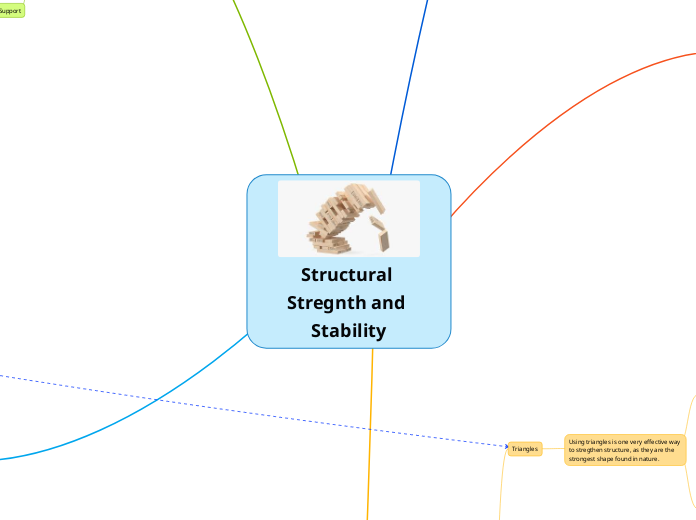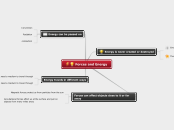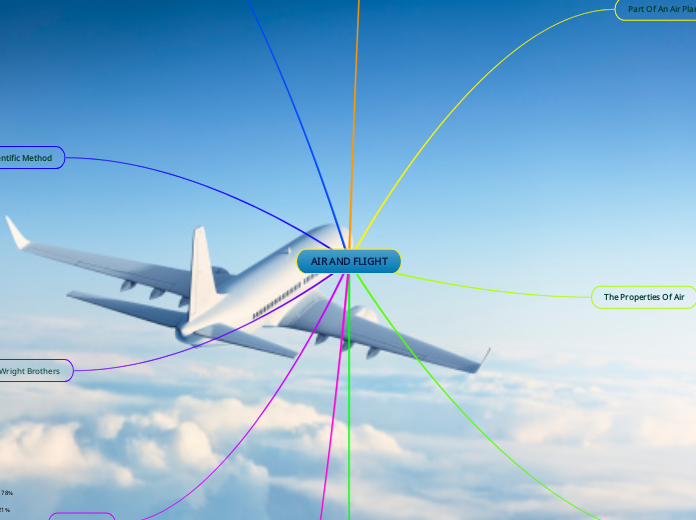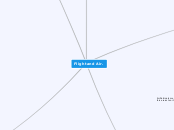Structural Stregnth and
Stability
INTERNAL FORCES
Tension
tension is the pulling or streching force that
is applied to a structure when large amounts
of force are introduced.
Compression
compression is the squeezing force that
occurs when large amounts of force are
applied to structures.
Shear
Shear is created when parallel forces acting in
opposite directions are at work on a part of a
structure.
There are also two different types of shear. Shear
is always created with parallel forces, 1 type pushing
toward each other, and the second type pushing in
opposite drections.
Torsion
Torsion is createde by applying opposite rotational
forces to different parts of a structure. structures
that are under torsion twist.
There are two different types of torsion. It is created
when opposite rotational forces are applied to a
structure, but is is also created when a rotational force is
applyed to one end of an anchored project.
Stregnthening Structures
Lamination
Lamination is the process in which multiple
thinner pieces of a material are bonded
together to create a piece that is more
lightweight or less expensive. The material
can also be made waterproof in the
process of lamination.
Corruigation
Corrugation is a series of pleated arches
used to stregnthen material alike to
carboard. this is why cardboard is such
a great packing material.
Ties and Struts
Struts
struts are used to resist compression forces.
They help to support the underneath of a
structure.
Ties
Ties are used to resist the forces of tension.
they help to hold up the top side of a
structure.
Curves
Simalirly to triangles, curves are also often
used to stregnthen a structure.
Arches
Arches are built to form a very strong
support. They transmite the compression
force from each piece to the next. One
piece arches also exist.
Triangles
Using triangles is one very effective way
to stregthen structure, as they are the
strongest shape found in nature.
Gusset
Gussets are made of solid materials and
used to reinfore a seam or a joint.
Gussets are also used to resit the forces
of tension, compression, and torsion.
Truss
A truss is a frame that takes advantage
of the stregnth of structures. they do this
by putting many of them together.
There are 3 different types of trusses : a
pratt truss, a warren truss, and a howe
truss. pratt truss's use right angle triangles,
warren trusses use equilateral triangles, and
howe trusses are often used on the inside of
roofs.
EXTERNAL FORCES
Magnitude
the magnitude of a force measures how strong a
force is. every force has a magnitude.
Direction
the effect of the force on the structure is determined
by the direction of the force
Point of Application
the point of application is the spot on the structure
that the force is being applied to.
Plane of Application
The plane of application is the angle at which the
force is being applied.
LOADS
Static Loads
static loads are caused by the force
of gravity.
Dead Loads
Dead loads are caused by the force of
gravity on the structure itself. They do
not change.
Live Loads
Live loads are caused by anything that is not permanantly attached tothe structure.
Dynamic Loads
dynamic loads are caused by forces
other than gravity and can change
rapidly.
STABILITY
Base of Support
the bases of support are every point of
contact that a structure makes with it's
supporting surface.
Centre of Gravity
The center of gravity is the place where
the mass of the object is concentrated.
Unstable
a structure will be unstable if it's unable
to remain on it's base when faced
with elements that it is desgined
to withstand.
Stable
A structure will remain stable if it has the
ability to remain on it's base when faced
with forces it is designed to withstand.









